Teeth whitening with hydrogen peroxide
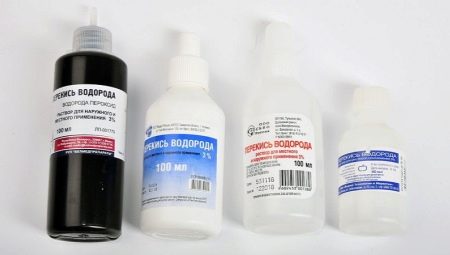
A snow-white smile is an integral part of the image of a modern well-groomed person; it affects his image and self-confidence. However, in addition to the aesthetic component, the shade of the teeth is considered an indicator of health. There are many ways to bleach enamel in the home. The use of hydrogen peroxide is recognized as one of the most popular.


Features of the method
The tooth enamel of any person becomes rough over time. They are invisible to the naked eye, but due to smoking, consumption of food and drinks containing dyes, or due to the use of certain groups of medicines, a pigmented film forms on the surface. It adheres tightly to the rough enamel coating, it is difficult to remove it even with the most expensive powders and pastes, and the use of an electric brush does not help. Therefore, in order to return the teeth to their natural white color, it is necessary to resort to whitening from time to time.
It is best to entrust this work to specialists - they use gentle methods that do not damage the teeth. But in the absence of such an opportunity, you can try to whiten the enamel at home.


One of the simplest and most effective home remedies for enamel lightening is hydrogen peroxide. It is an effective bleach that can quickly remove age spots, dirty yellow deposits and darkening. The principle of operation is simple: penetrating into the structure of the enamel, the composition is in contact with dentin.During the reaction, oxygen is released, due to this, all complex organic substances break down into simplest components, which are easily removed by rinsing or ordinary brushing with a toothbrush. Thus, due to the influence of oxygen, dark plaque is removed from the teeth.
This method has advantages and disadvantages. The pluses include:
- availability - you can buy hydrogen peroxide at any pharmacy;
- low cost of the drug;
- high efficiency.
There are also disadvantages:
- high risk of injury to the enamel;
- the presence of an impressive list of contraindications.

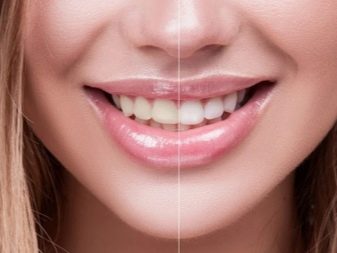
Indications and contraindications
Lightening of tooth enamel using hydrogen peroxide is used in the following situations:
- yellowing or darkening of the enamel due to abuse of tea, coffee, when smoking;
- regular use of care products containing fluoride salts: toothpastes, rinses or prophylactic gels with a high concentration of this microelement (they can only be used in courses);
- long-term use of drugs of the tetracycline series;
- a change in the tone of the enamel in the course of the natural aging processes of the body.
Hydrogen peroxide is an aggressive oxidizing agent, therefore bleaching in this way has its own contraindications:
- bleeding gums;
- advanced or acute caries requiring treatment; increased sensitivity of tooth enamel;
- wearing plates or braces;
- wearing dentures;
- pathology of the gastrointestinal tract;
- pregnancy and lactation;
- children's age - up to 12 years;
- pulpitis;
- the presence of an ulcer on the mucous membranes of the oral cavity.

Precautionary measures
When working with hydrogen peroxide, only a 3% solution is used. More concentrated formulations inevitably lead to injury to the tooth enamel. Before using peroxide, a drug sensitivity test should be performed. To do this, a little hydrogen peroxide is applied to the back of the elbow. If the treated area turns red, swelling or a rash appears, it is better to refuse to use a tooth whitening agent.
Hydrogen peroxide belongs to the group of the strongest oxidizing agents. It can not only whiten the enamel, but also lead to an increase in the sensitivity of the teeth. Therefore, those people who, when taking cold or hot foods, experience discomfort and discomfort, should not resort to such a drug. It is not recommended to clean the enamel with peroxide in case of unhealed caries, periodontal disease, as well as during the eruption of wisdom teeth.
After treatment with formulations based on the drug, the oral cavity is always washed with water at room temperature in order to remove all residues of an aggressive substance.
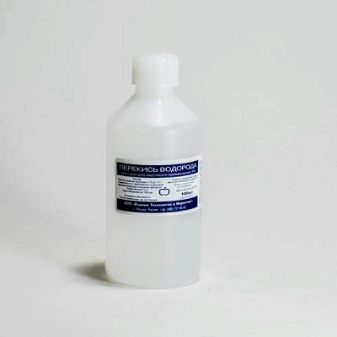

How to Prepare?
The teeth whitening procedure itself is traumatic for the enamel. Therefore, before using it, you need to take preparatory measures, they will minimize the risk of undesirable consequences. And first of all, you should visit a dentist. During a medical examination, the doctor will be able to determine what the condition of the oral cavity, teeth and enamel itself is.
Peroxide treatment is recommended only for those people whose enamel is strong and thick. The dentist checks the teeth, identifies all areas of yellowing and determines the cause of their appearance. Keep in mind that hydrogen peroxide can only remove the yellowness that is on the outside of the tooth. If the darkening comes from the inside, then the treatment will not give any lightening effect.
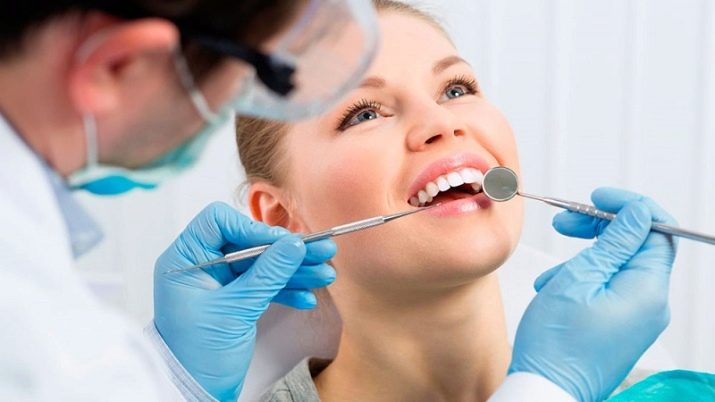
Home use options
There are quite a few different techniques that allow you to properly whiten tooth enamel with peroxide. With their help, you can easily and easily whiten teeth in a domestic environment, each of them is distinguished by its effectiveness and gentle effect on the hard and soft tissues of the oral cavity.
With water
The safest technique of teeth whitening is peroxide with water. The oral cavity treatment process includes three stages.
- Cleaning the surface of the teeth with a fluoride paste - its components protect the enamel from adverse external influences and thereby prevent its injury and deterioration.
- Then you need to make a rinse solution. To do this, peroxide is mixed with boiled or filtered water in equal proportions. The processing time should not exceed 1 minute.
- At the end of the treatment of teeth, rinse your mouth with plain water, this will wash off all the remaining peroxide.
Important: within 30-40 minutes after manipulations, it is undesirable to consume food and drinks - this leads to darkening of the tooth enamel. It will be very difficult to get rid of this plaque.

With toothpaste
You can clean your teeth at home with regular toothpaste. To do this, both components are combined in a small cup - they are mixed in equal volumes. The resulting mixture is used for cleaning teeth every morning. Such treatment allows achieving a double effect: teeth are whitened, and additionally, the oral cavity is disinfected and breath is freshened.
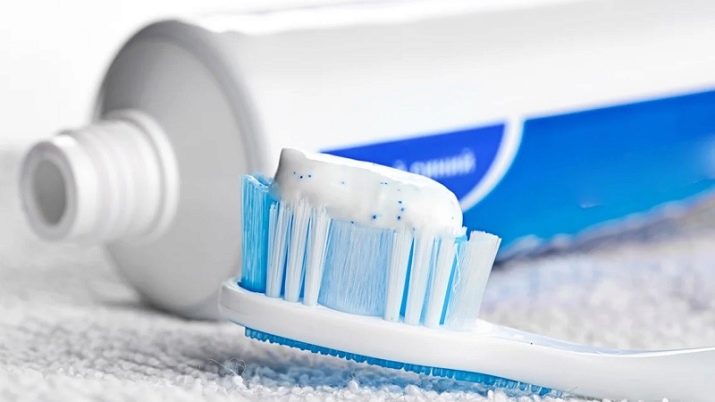
With tooth powder
If you have tooth powder, you can use it to strengthen the enamel of your teeth. To do this, the brush is dipped in powder, and a couple of drops of peroxide are applied on top. The teeth are cleaned with this compound in the usual way and the mouth is thoroughly rinsed with water. Hydrogen peroxide in tandem with coarse and sharp powder abrasives provides a double whitening effect. However, teeth can be treated with this method no more than once a week.
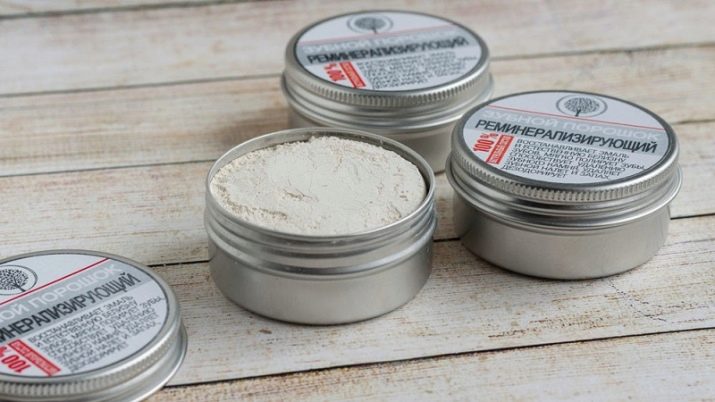
With salt
Salt has a good whitening effect. To properly formulate the whitening composition, you need a mixture of one part peroxide and two parts water, you also need to add a pinch of salt and soda. The resulting composition is thoroughly stirred and rinsed with it for 40-60 seconds.
There is also a recipe for whitening teeth using only baking soda. When combined with hydrogen peroxide, you will get noticeable results and tangible benefits. To this end, a mushy mixture is prepared from peroxide and soda, and then spread it over the surface of the teeth with a cotton pad, swab or even fingers. The composition is left for two to three minutes, after which the oral cavity is rinsed with water at room temperature. Immediately after this, it is advisable to brush your teeth with fluoridated paste.
Please note that when using soda and peroxide, you should adhere to safety standards:
- do not use a brush to apply the composition to the teeth, especially with hard bristles; you can only wipe your teeth with a cotton swab or soft napkin;
- minimize the interaction of the working composition with the oral mucosa and gums;
- avoid contact of the mixture with tooth enamel for more than 2-3 minutes.
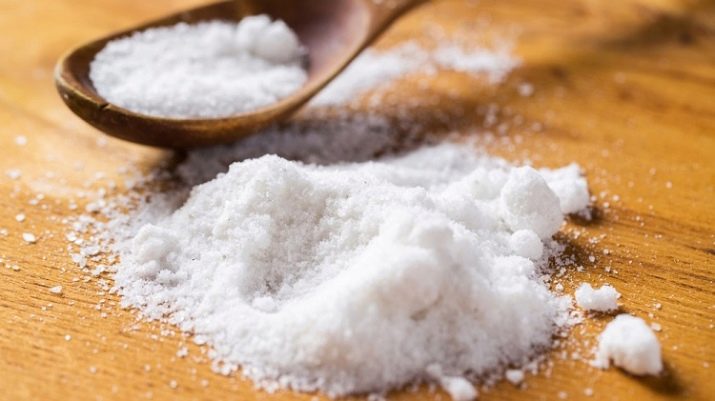
Clean solution
One of the easiest home lightening methods is to rinse your mouth with pure peroxide. It is recommended to be used by people who have time restrictions on any hygienic manipulations. Such manipulations take no more than 10-15 seconds - this is quite convenient when you are in a hurry to work and cannot afford to spend extra time on drawing up active formulations. Do not keep this product in your mouth for more than 8-10 seconds, in this case, you can damage the enamel.
During the treatment, sometimes there is a feeling of a slight burning sensation and tingling - this is completely normal and there is no need to worry. After rinsing, a piece of cotton wool should be moistened with the solution and gently rubbed over the problem areas on the teeth. Then the mouth is rinsed with water. As in all other cases, after manipulations, one must refrain from taking food and drinks for at least half an hour.
The method is recommended for use no more than once or twice every 7-10 days. This procedure has a good effect and works very quickly. Lightening by half a tone can be noticed after two or three treatments.

With lemon
A mixture of peroxide with lemon gives a good effect for lightening the color of teeth. To prepare a whitening compound, you need to make a slurry of soda, hydrogen peroxide and a couple of drops of lemon juice. This composition is applied to a soft-bristled toothbrush and thoroughly smeared on both sides of the teeth.

Are there any side effects?
When using hydrogen peroxide, the effect of teeth whitening begins quite quickly - after two to three weeks, you can notice a lightening of the enamel by one or two tones. For in order to prevent repeated darkening of the tooth enamel, it is advisable to carry out the treatment 2-3 times a year. However, one should bear in mind the possible dangerous consequences. So, when using hydrogen peroxide, you must be extremely careful, otherwise you can cause significant harm to dental health. An incorrectly performed procedure negatively affects the condition of the oral cavity. Studies have shown that excessive concentration of hydrogen peroxide is harmful, it damages three layers at once - enamel, dentin, as well as internal connective tissues, thanks to which the tooth is firmly adhered to the gum.
That's why if the technique is not followed, such phenomena as bleeding of the gums and thinning of the enamel due to chemical burns often occur. Recent studies have shown that peroxide damages three layers of the tooth at once - enamel, dentin and the inner layer of connective tissue, which allows the tooth to sit firmly in the gum.
If there is a filling in the tooth and it does not fit tightly, then the peroxide components will penetrate into the dental cavity. This will cause its accelerated destruction. That is why, before resorting to teeth whitening at home, you should seek the advice of a dentist.









